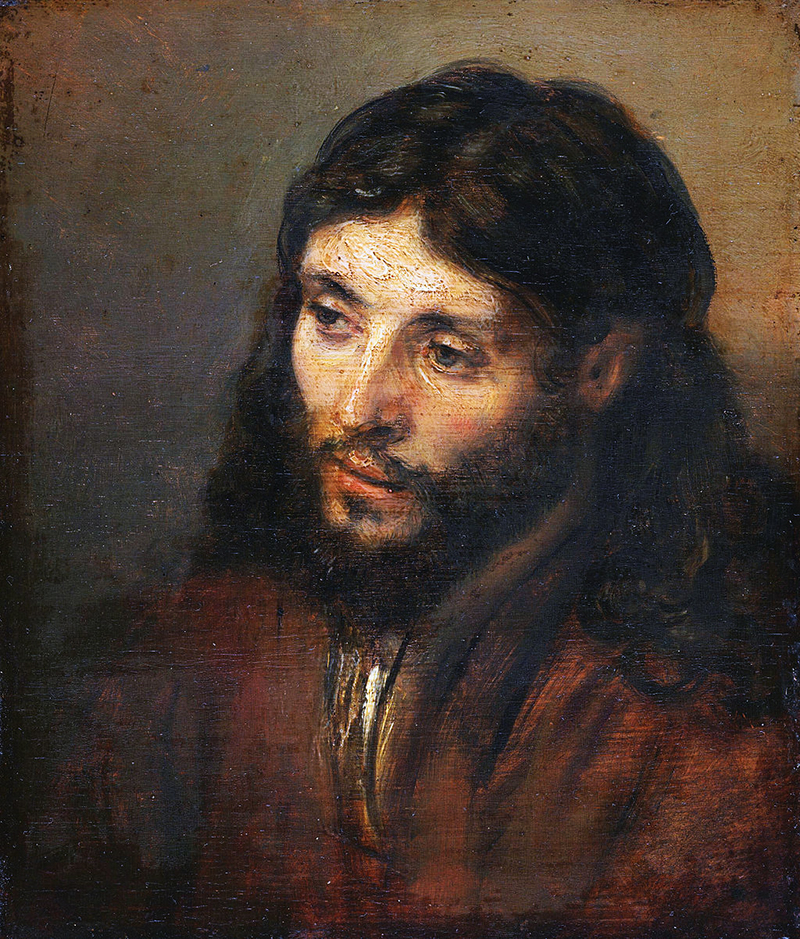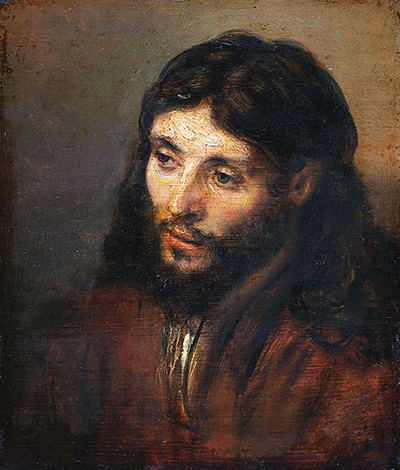Rembrandt's Head of Christ dates from 1648, and is one of a series of pictures painted by Rembrandt and his studio in the late 1640s, using the same model.
Past centuries of art had shown Jesus as numinous, divinely beautiful, or majestic. Rembrandt, instead, concentrates on the human being, breaking with artistic tradition to create a quite revolutionary image of Christ.
He even breaks with his own conventional portrayal of Jesus in the 1644 Woman taken in Adultery, in which he showed a Jesus with long, golden hair, taller than all the other figures in the scene, beautiful and beautifully posed.
In the auction of his effects that followed Rembrandt's bankruptcy, there is a reference to "Head of Christ, done from life" - that is, using a live model. Rembrandt saw painting from life as a touchstone of truth, guaranteeing art that reflected real life rather than artistic or social convention.
It's quite likely that the sitter was a Jew from the Sephardi community which lived in Rembrandt's neighbourhood, which adds a further element of revolutionary thinking if it is true; Rembrandt envisions a Jewish Jesus, not a Christian Christ - using life painting as a way of getting back to the historical truth.
That may be a reflection of Dutch Protestantism, which found artistic representations of Christ problematic if they approached too closely to what might be considered idolatry.
By stressing the humanity of his Christ, Rembrandt creates a painting that can't possibly be considered an icon; it's an invitation to think and engage with the subject, not to worship.
This Jesus has no halo. His pose is relaxed, perhaps weary, and he is not looking directly at the viewer; he is pensive, thinking deeply. He could be anyone; only the beard and the long hair allow the viewer to recognise him as Jesus.
He looks slightly up, from beneath drooping eyelids, almost shyly. His clothes blur into the dark background; there is nothing to distract from the impact of the portrait. It's an understated painting; Jesus doesn't preach, isn't doing miracles, but is simply sitting, thinking. The focus is entirely on the sitter's expression and emotions.
This is a small painting, and an intimate one; Rembrandt really gets to the heart of the man sitting opposite him. There is no context - no furniture, no symbols, no suggestion of any Biblical narrative, just the portrait.
Rembrandt tries to show who Jesus is - not what he did or what he said. Possibly this painting, together with other smaller heads of Christ, was only a study for one of the larger paintings, such as The Supper at Emmaus, but its emotional intensity puts it far beyond the mere status of a sketch.
There is a sense of mystery about the picture - perhaps exactly because Rembrandt cuts it loose from any background. (Compare that to Rembrandt's own self-portraits, which so often have fancy dress or painter's equipment as key elements, setting him in a definite context.)





